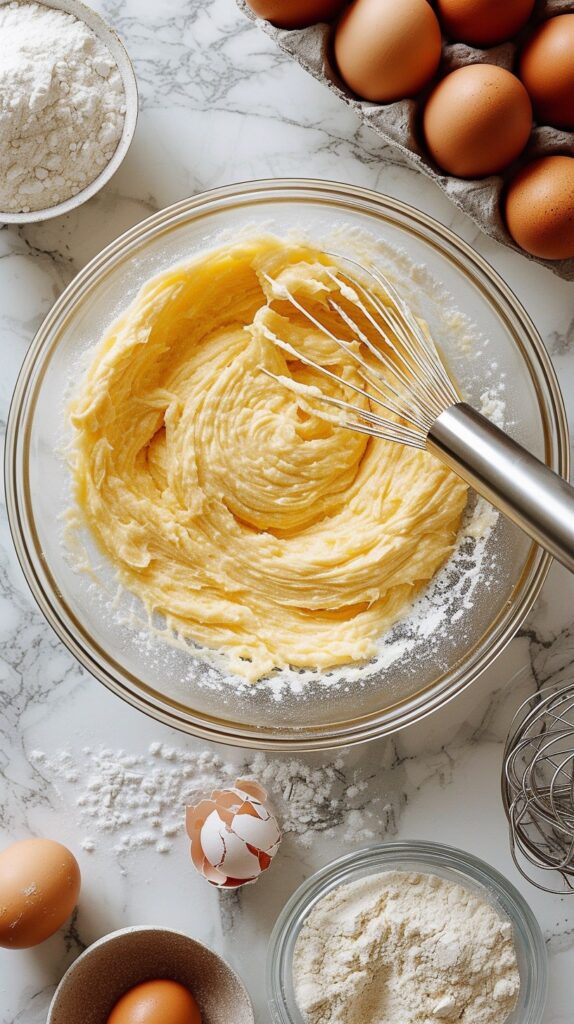“Baking Beyond Flour” explores alternative ingredients to traditional wheat flour, catering to dietary restrictions and expanding culinary creativity. Highlighted substitutes include almond flour, which is gluten-free and adds moisture to baked goods; coconut flour, known for its absorbency and subtle coconut flavor; oat flour, rich in beta-glucans for heart health; buckwheat flour, earthy and packed with nutrients; chickpea flour, high in protein and ideal for savory dishes; quinoa flour, a complete protein source; and tapioca flour, which enhances texture in gluten-free baking. These alternatives offer diverse flavors and nutritional benefits, transforming baking experiences.
Baking Beyond Flour: Alternative Ingredients That Create Magic
In the world of baking, flour has traditionally been the star player, providing the structure and texture to all manner of delightful treats. However, as dietary restrictions, health trends, and culinary creativity expand, more bakers are exploring alternatives to wheat flour. Whether you are gluten-sensitive, vegan, or simply seeking to elevate your baking game, alternative ingredients can unlock a universe of flavor and nutrition. In this article, we will delve into some of the most exciting flour substitutes and their nutritional profiles.
1. Almond Flour
Overview:
Almond flour, made from finely ground blanched almonds, is a popular choice for gluten-free and low-carb baking.
Nutritional Value:
- Calories: Approximately 640 calories per 100 grams.
- Protein: 21 grams
- Fat: 56 grams (mostly healthy monounsaturated fats)
- Fiber: 12 grams
- Carbohydrates: 20 grams
Baking Benefits:
Almond flour adds a slightly sweet and nutty flavor to baked goods. It lends moisture, making it a great option for cakes, muffins, and pancakes. It’s high in protein and fiber, which contributes to a feeling of fullness and supports digestive health.
2. Coconut Flour
Overview:
Coconut flour is made from dried coconut meat and is known for its unique texture and flavor.
Nutritional Value:
- Calories: Approximately 400 calories per 100 grams.
- Protein: 20 grams
- Fat: 14 grams
- Fiber: 38 grams
- Carbohydrates: 60 grams
Baking Benefits:
Coconut flour is highly absorbent and requires more liquid in recipes. It’s a perfect fit for cookies, cakes, and bread. The high fiber content aids digestion and helps maintain stable blood sugar levels. Plus, it has a subtle coconut flavor that adds a lovely twist to recipes.
3. Oat Flour
Overview:
Oat flour is simply ground oats, offering a delicious and hearty flavor.
Nutritional Value:
- Calories: Approximately 389 calories per 100 grams.
- Protein: 13 grams
- Fat: 6.9 grams
- Fiber: 10 grams
- Carbohydrates: 66 grams
Baking Benefits:
Oat flour can replace wheat flour in equal amounts in most recipes and is wonderful for pancakes, muffins, and bread. It contains beta-glucans, a type of soluble fiber known to support heart health and lower cholesterol levels. Additionally, it has a mild taste, making it a versatile choice for various baked goods.
4. Buckwheat Flour
Overview:
Despite its name, buckwheat is gluten-free and not a type of wheat. It’s a seed from the fruit of the buckwheat plant.
Nutritional Value:
- Calories: Approximately 335 calories per 100 grams.
- Protein: 13 grams
- Fat: 3.3 grams
- Fiber: 10 grams
- Carbohydrates: 71 grams
Baking Benefits:
Buckwheat flour has a rich, earthy flavor and is perfect for pancakes, breads, and cookies. It’s packed with antioxidants and essential nutrients, including magnesium and phosphorus, which are vital for healthy bones. Its high fiber content can promote digestive health.
5. Chickpea Flour (Besan)
Overview:
Chickpea flour, also known as besan, is made from ground chickpeas and is popular in many cuisines, especially in Indian cooking.
Nutritional Value:
- Calories: Approximately 387 calories per 100 grams.
- Protein: 22 grams
- Fat: 6 grams
- Fiber: 10 grams
- Carbohydrates: 58 grams
Baking Benefits:
Chickpea flour adds a nutty flavor and dense texture to baked goods. It is excellent for making pancakes, fritters, or as a thickening agent in sauces. With a high protein content, it helps in muscle repair and growth, making it ideal for athletes and fitness enthusiasts.
6. Quinoa Flour
Overview:
Quinoa flour is made from ground quinoa seeds, which are grain-like seeds rich in protein.
Nutritional Value:
- Calories: Approximately 368 calories per 100 grams.
- Protein: 14 grams
- Fat: 6 grams
- Fiber: 7 grams
- Carbohydrates: 64 grams
Baking Benefits:
Quinoa flour has a slightly nutty flavor and is high in complete protein, containing all nine essential amino acids. It’s great for pancakes, bread, and even cookies. Additionally, the flour is rich in iron and magnesium, promoting overall health and wellness.
7. Tapioca Flour
Overview:
Tapioca flour, also known as tapioca starch, is derived from the cassava root and is primarily used for its thickening properties.
Nutritional Value:
- Calories: Approximately 358 calories per 100 grams.
- Protein: 0 grams
- Fat: 0 grams
- Fiber: 1.2 grams
- Carbohydrates: 88 grams
Baking Benefits:
Tapioca flour is often used in gluten-free baking to provide a chewy texture and lighten the density of batters. While it is low in protein and fiber, it can be blended with other flours to enhance the texture of baked goods such as bread, pizza crusts, and cookies.
Conclusion
As we venture beyond traditional wheat flour, we discover a myriad of alternative ingredients, each with unique flavors, textures, and nutritional benefits. By incorporating these diverse flours into your baking repertoire, not only can you accommodate various dietary needs, but you can also expand your culinary creativity.
From the nutty richness of almond flour to the earthy tones of buckwheat, the world of alternative baking is a magical one, full of potential and bursting with flavor. So, the next time you pull out your mixing bowl, consider reaching for something beyond flour and see how these alternatives can transform your baking adventures. Happy baking!
